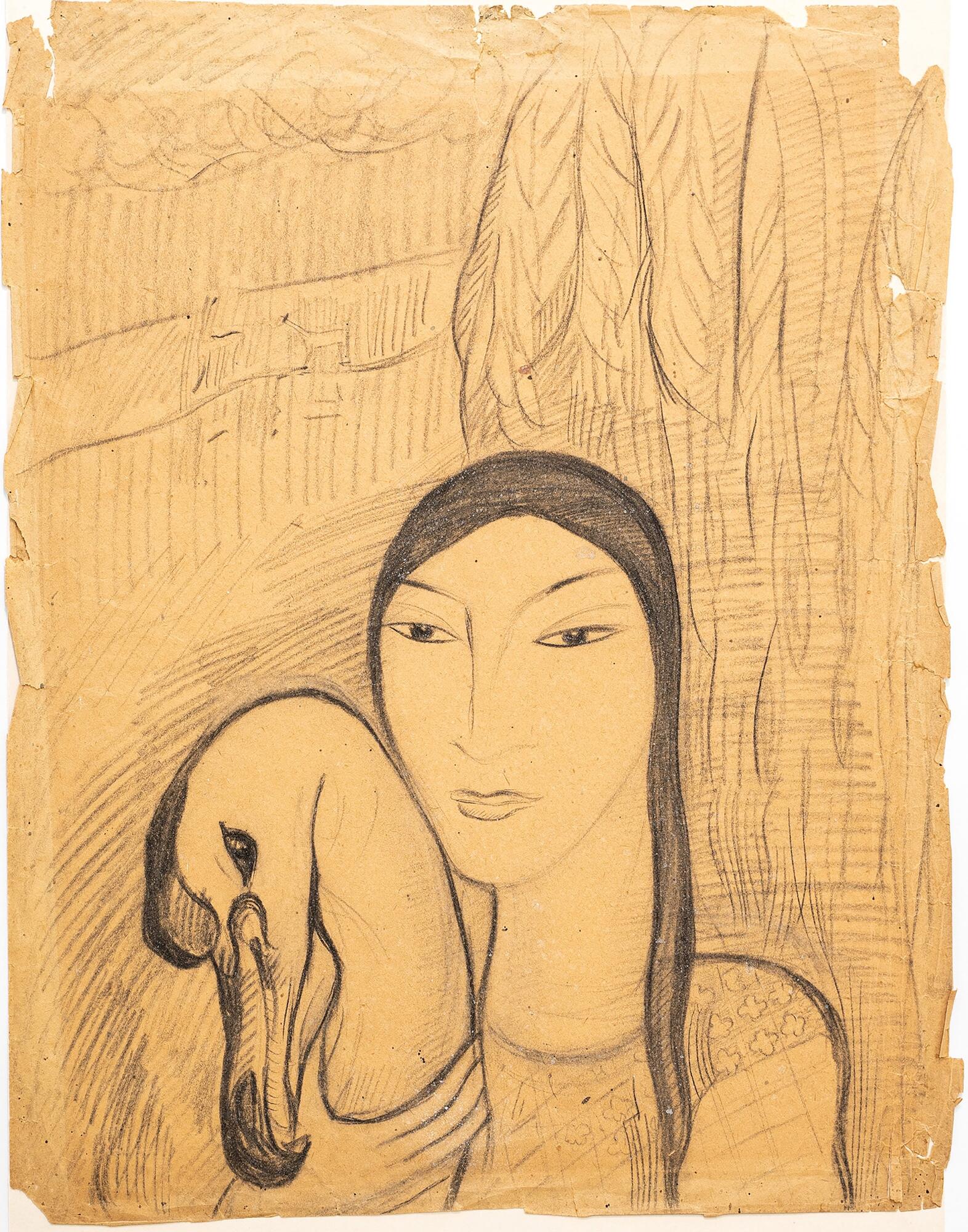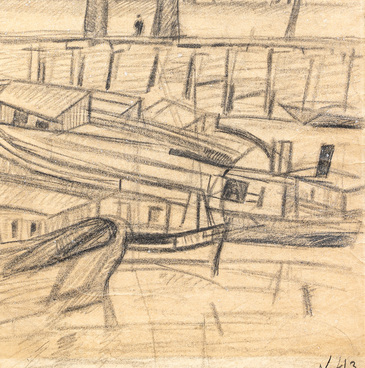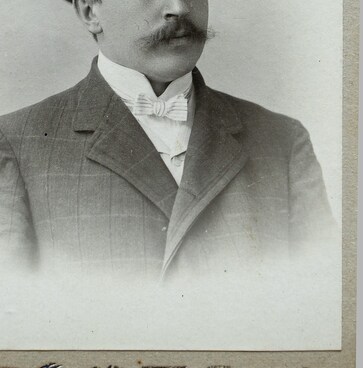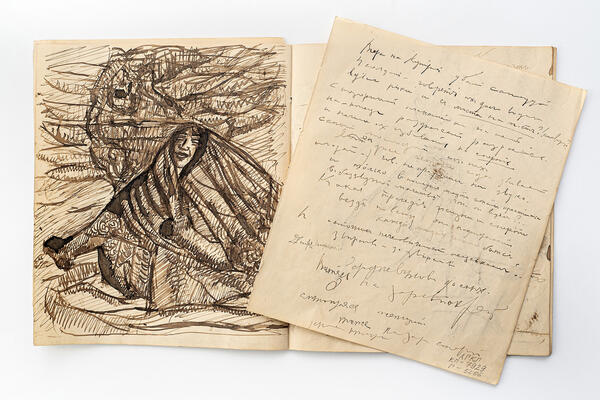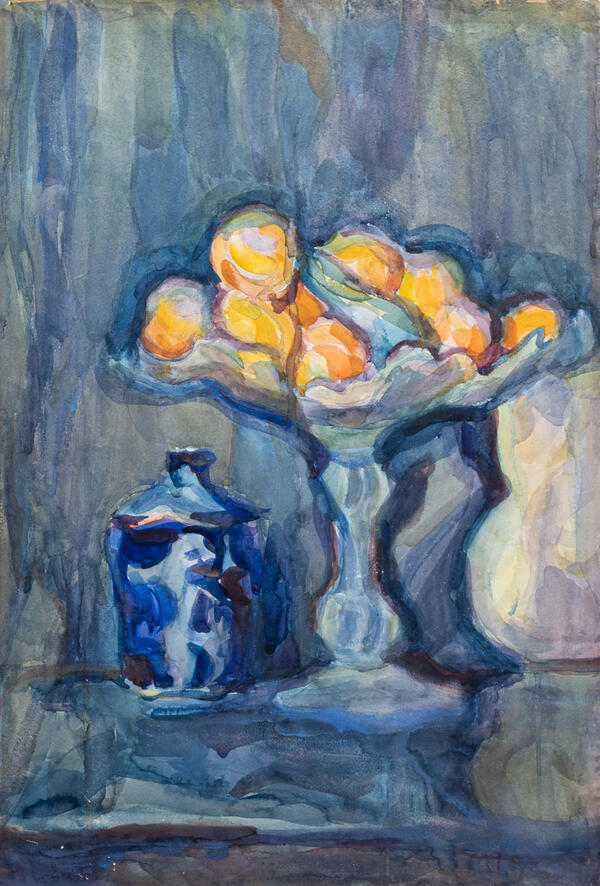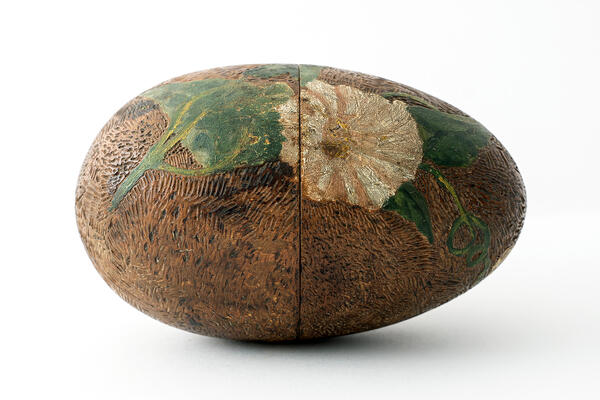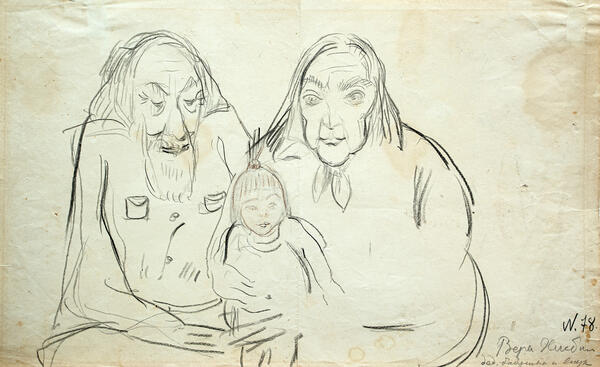Vera Vladimirovna Khlebnikova (1890–1941) always worked hard, even during the famine and devastation of the Russian Civil War. At the same time, she rarely took part in exhibitions and was known only to a narrow group of friends from her artistic circles.
Vera Vladimirovna’s works were exhibited in Astrakhan in 1919 when the family lived in the city. That was the first exhibition of the Astrakhan Community of Artists, and Velimir Khlebnikov, who deeply appreciated his sister’s talent, selected works together with her, took them and presented them to the jury.
After the artist’s death, her name was almost forgotten. It was only in the late 1960s and mid-1970s that she and her brother Velimir began to “return” to their ancestral hometown. From October to November 1977, the artist’s personal exhibition was held in the wing of the Astrakhan Art Gallery. The visitors were presented with Vera’s graphic works and paintings, as well as a separate hall dedicated to Velimir.
This artistic event was not limited to a regional scale. Thanks largely to the art critic and organizer of exhibitions in Astrakhan and Moscow, Kaleria Mikhailovna Chernysheva, Vera’s paintings were then displayed in the Central House of Writers in Moscow and the State Russian Museum of Leningrad. People started talking about the “artist’s deep charm”, and articles and books about her work were published.
Vera Khlebnikova’s graphic sheets, including “Young Woman with a Swan” (1917), reveal her keen interest in the East. The origins of this attachment can be traced back to her childhood: she saw the steppe expanses of Lebedia (the ancient name of the Volga — Oka region), where the Khlebnikovs lived, and had a deep understanding of folk culture, everyday life and history of the Kalmyks.
The artist was attracted not so much by the exotic, but by the opportunity to convey the rhythm of life of Eastern people using artistic means. According to Sergey Filippovich Bobkov, author of the book “Vera Khlebnikova”, the image of a young Kalmyk woman with characteristically slanted eyes and a black braid embracing a swan is deeply in tune with Velimir’s poetry. Other researchers have also noted common features in the perception of the Eastern theme in the siblings’ works.
The Velimir Khlebnikov House Museum displays the
painting “Young Woman with a Swan” in the memorial part of the museum, in
“Vera’s Room”.
